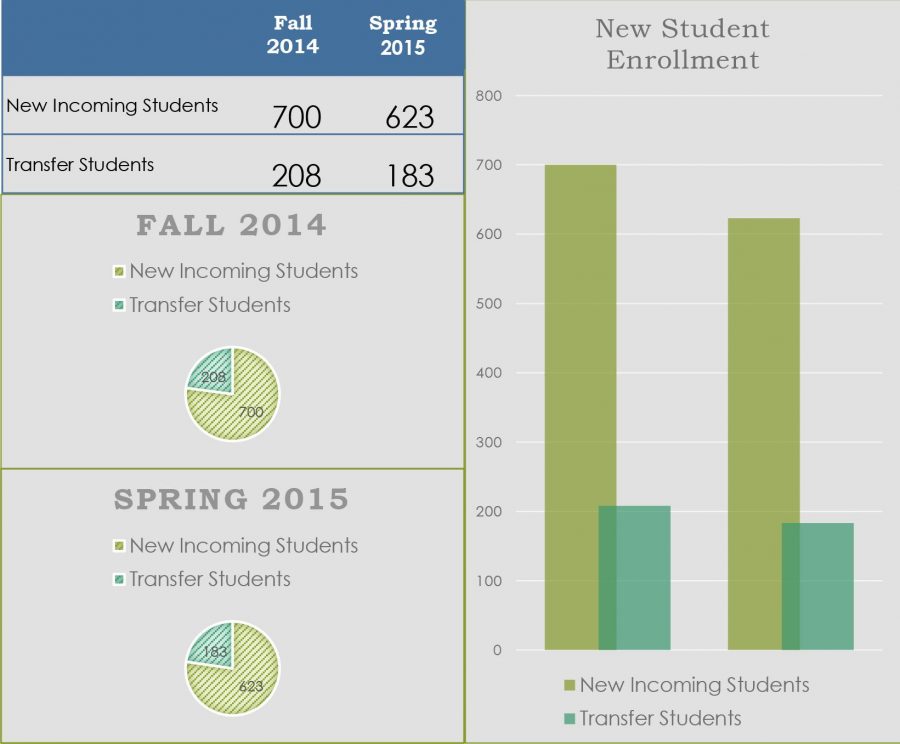Retention rates high for Wayne State
Incoming students from first semester stick around for round two
January 22, 2015
Many of last semester’s new freshmen and transfers stuck around.
In fact, almost all of them.
According to Institutional Research Analyst Jeannette Barry, the preliminary retention figures indicate that of the fall 2014 first-time, full-time new freshmen returning in spring 2015, 89 percent of those students chose to stay at Wayne State College.
Among the fall 2014 full-time new transfers, 88 percent have returned.
Tina Rosberg, a junior English Writing and Literature major, is a returning transfer from UNK who decided to make the change to be closer to her hometown. She was aware of the college both because of its proximity to her home and because it’s the school where her two brothers graduated. She, too, plans on graduating at WSC.
Her transfer process has been a positive one.
“It’s gone pretty smoothly, though it’s been hard transferring over some upper level English courses. But so far I really like the professors, and the library is a nice place to sit and people-watch,” Rosberg said.
In the fall, a freshman class of about 700 students arrived at WSC, bringing with them one of the largest number of new full-time transfers: 208.
The freshman class was up 18 percent and transfers were up 15 percent from past figures.
The institutional goal, decided after strategic planning, is to gain 725 freshmen and 250 transfers each year. Though these goals were not reached, the numbers did come up equal to last year, which, according to Director of Admissions Kevin Halle, is a good place to be for WSC.
Halle is also optimistic that Wayne will reach those goals next year.
“We are working towards meeting both of those goals. One of the ways we are doing this is with our Transfer Admissions Representative Erin Polacek, who commutes to area colleges,” Halle said. “She is responsible in strengthening relationships and improving enrollment to present us as the next and only choice for [students’] four-year degrees. Our applications for transfer students are up, and are a positive indicator of what fall 2015 will look like.”
The Admissions Department looks for indicators early on in the spring semester to predict exactly how many students to expect in the coming year. They look at housing applications and FAFSA results. As the department gets closer to registration dates, they will look at those, scholarship applications and registration for “Just Junior” days as indicators for coming years’ enrollments.
“We can’t do what we do without being paired with campus faculty, staff and current students that help [prospective] students make the decision that this is the place they want to go,” Halle said.







